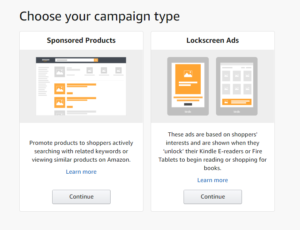 Log into your KDP account at Amazon and click on the tab for Marketing. Your first choice will be to choose between a sponsored ad or a lock screen ad.
Log into your KDP account at Amazon and click on the tab for Marketing. Your first choice will be to choose between a sponsored ad or a lock screen ad.
Today we are going with a Sponsored Ad Campaign. This is the one where you can use similar products and/or keywords.
Create Your First PPC Campaign:
Once you choose the Sponsored Product Campaign, the following screen (or one similar to it, depending upon when you are reading this):
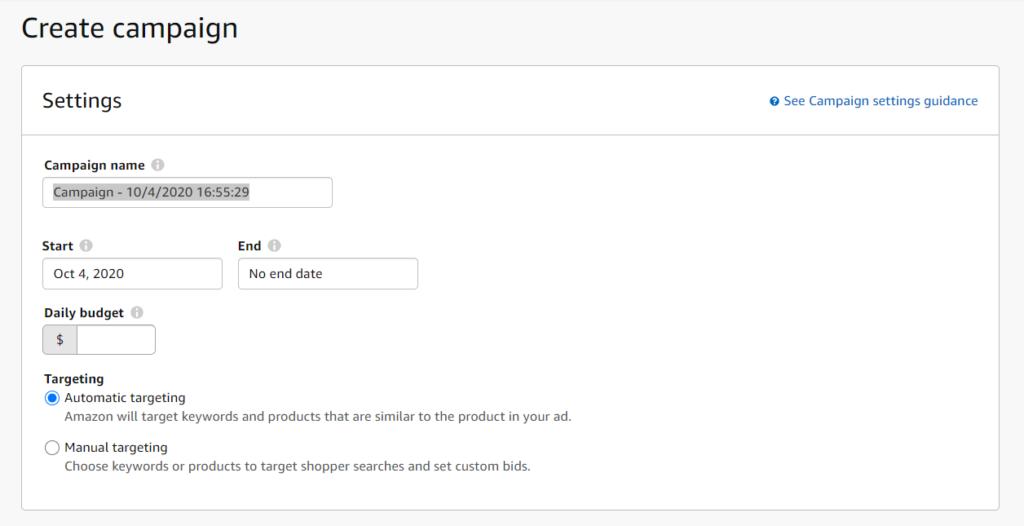
The campaign name will only be seen by you, so make it a name that you can identify. I chose to name mine "Groomed - Sponsored Product - First Week" so that I will remember this is my first one. I also chose automatic targeting so that I can see what Amazon and it's huge database of keywords will throw up for me. This was recommended by NomadMillionaire on YouTube who is a pro at PPC, so I am following his lead.
You will need to determine how much you are willing to pay for this campaign. I chose $15 dollars a day to start. This will give me a chance to see what kind of action $100 a week can bring.
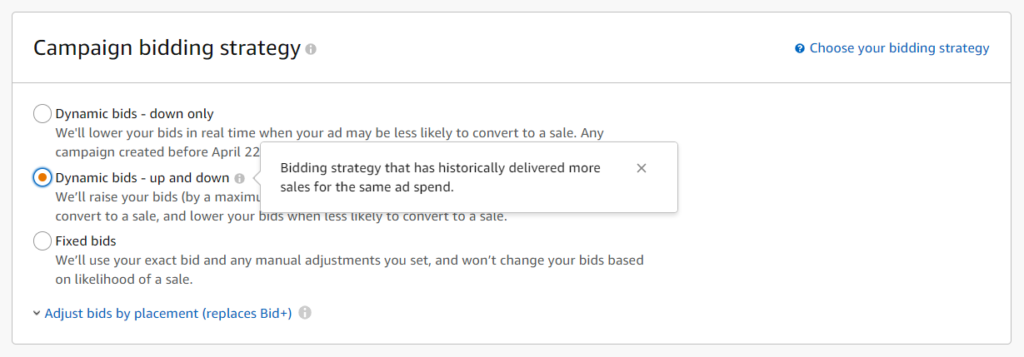
CAMPAIGN-BUILDING STRATEGY
Since the second choice, Dynamic bids, up and down delivers more sales, I chose to go with this one. This one week will give me an idea of how far up and down Amazon feels comfortable to go. The other two choices can be manipulated by PPC pros, which I'm not right now!
Choose an Amazon PPC Format:

I decided to go with the standard ad because I haven't researched custom text ads, so I will see what Amazon does using just a standard ad.
Name an Ad Group and Choose a Book/Product:
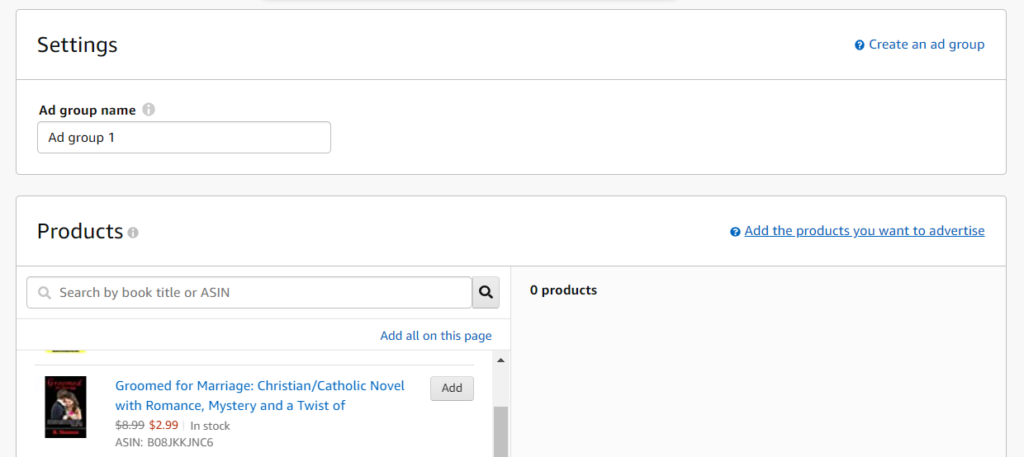
In NomadMilliionaries's video that I referenced in our last blog post, he left the Ad Group Name to the default of Ad Group 1, so I did the same. I didn't come across any tips regarding this in the other videos I watched, so I'm just going to see what it looks like after I have a few ads going and see if naming this in some other way will work better in the future.
You will be logged into your KDP account, so it will throw up all of your own products for you to choose, which I am doing with my new book Groomed for Marriage by R. Shannon but you can also choose a product by an ASIN number. Most people who have found their way to this blog post will be fellow book marketers, so I won't go into ASIN numbers.
Automatic Targeting & Negative Keyword Targeting
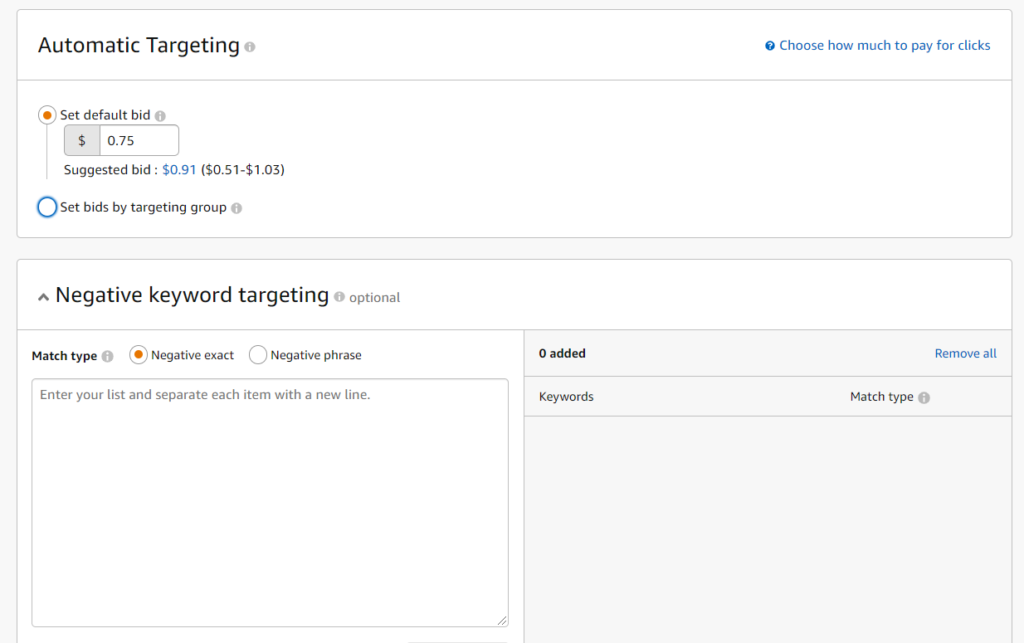
A default bid comes up with this box too and although I think .75 is too high for one bid, I am accepting it as I am also testing Amazon's algorithms to see what comes out. This will only be for a week, so I have control over the overall spending.
I will want to find out how to use negative keywords in order to prevent my book from coming up with people who are searching for the actual crime known as grooming but this first week will give me an idea if that will even be a problem or if Amazon's artificial intelligence can already recognize fiction from non-fiction searches which it probably can.
Negative Product Targeting:

This is the last box that comes up and I am going to let Amazon run the first campaign. During this upcoming week that I am waiting, I will research negative keywords and negative product strategies so that when I am doing an exact campaign, I can use these strategies if they are worth it.
Once you click Launch Campaign at the end, that's it. You're advertising on Amazon. I hope this helps save everyone a lot of research time!

 Once I finished my first Novel, Groomed for Marriage, I launched it on BookFunell to give it away in order to build a reader list. My expectations were low; I would have been happy to have given away 50 copies. Well, to my astonishment, I wound up giving away over 600 copies of the book. These are people who chose to sign up to down the full book for free.
Once I finished my first Novel, Groomed for Marriage, I launched it on BookFunell to give it away in order to build a reader list. My expectations were low; I would have been happy to have given away 50 copies. Well, to my astonishment, I wound up giving away over 600 copies of the book. These are people who chose to sign up to down the full book for free.